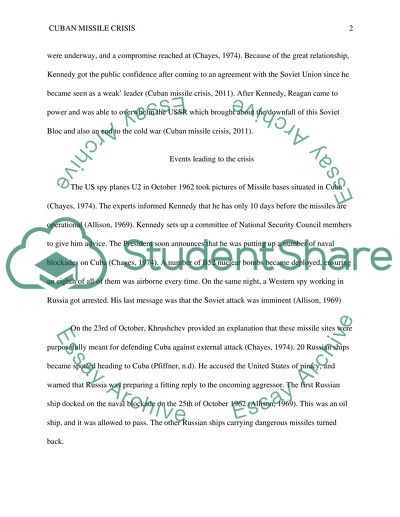Cite this document
(“Cuban Missile Crisis Research Paper Example | Topics and Well Written Essays - 2000 words”, n.d.)
Cuban Missile Crisis Research Paper Example | Topics and Well Written Essays - 2000 words. Retrieved from https://studentshare.org/history/1456147-cuban-missile-crisis
Cuban Missile Crisis Research Paper Example | Topics and Well Written Essays - 2000 words. Retrieved from https://studentshare.org/history/1456147-cuban-missile-crisis
(Cuban Missile Crisis Research Paper Example | Topics and Well Written Essays - 2000 Words)
Cuban Missile Crisis Research Paper Example | Topics and Well Written Essays - 2000 Words. https://studentshare.org/history/1456147-cuban-missile-crisis.
Cuban Missile Crisis Research Paper Example | Topics and Well Written Essays - 2000 Words. https://studentshare.org/history/1456147-cuban-missile-crisis.
“Cuban Missile Crisis Research Paper Example | Topics and Well Written Essays - 2000 Words”, n.d. https://studentshare.org/history/1456147-cuban-missile-crisis.


